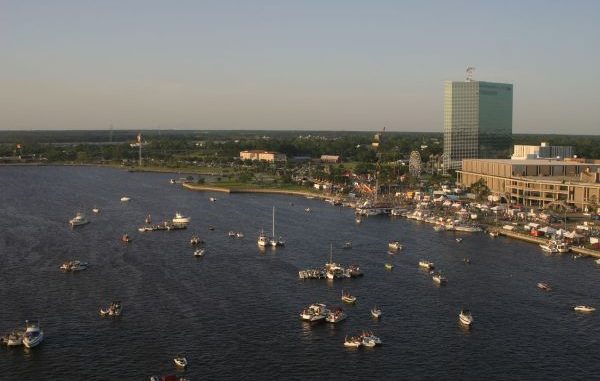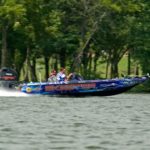
Familiarity with boat handling characteristics and safe operation
In last month’s column we took a look at some of the required training and safety equipment for boats operating on public waterways. A working knowledge of safety rules acquired in the boating education course and good safety equipment are the basics for becoming a safe boat owner/operator.
Notice I said “basics,” because it’s just the beginning of what we need to know about boating. Anyone who has been through a hunter safety course, knows part of the curriculum is firing a shotgun or rifle on the range. Wouldn’t it be great if the boating course included a little time on the water operating a boat?
Understandably it is not very practical. But one of these days maybe we will at least have a simulator in the classroom so students get a little experience afloat, albeit artificial. It works for aircraft and cars doesn’t it?
In the training academy, wildlife enforcement cadets are taught every aspect of boat operation. The classroom work is a good starting point, and from there they move out on the water to gain actual experience.
Under the watchful eye of training officers they learn to safely tow a boat and trailer, followed by launching and recovery, docking, steering, approach to other vessels, avoiding potential hazards and much, much more.
The beginning recreational boater would do well to find an experienced boat operator willing to serve as an instructor, and spend time on the water learning from him or her. As kids growing up where I did, we learned many things from our dads and granddads, including how to run a boat. I started with a 7.5-horsepower on a 14-foot bateau before moving on to the big time — a 20-horse.
Unfortunately, not everyone today gets to start small and progress up the ladder. For many, their first boat may exceed 100 horsepower.
For any boat operator, experienced or otherwise, the handling characteristics of a particular boat are crucial. Tiller-operated boats are steered differently than boats equipped with a steering wheel. Stick steering is another variation. Horsepower, weight distribution, boat length and propulsion systems all affect handling.
The first fatal boating accident I ever investigated was a case in point.
Leaving the Region 3 office in Pineville one summer afternoon, I turned into the boat landing parking lot on Lake Buhlow for a quick look.
Buhlow is a small lake in Pineville near Fort Randolph Commemorative Site on the Red River. It receives a lot of boating and fishing activity. Local boat dealers also use it for potential buyers wishing to test drive boats.
On this particular afternoon, one of the boat salesmen was on the lake in a boat with a potential buyer. They were near the boat landing checking out the electric trolling motor when I saw them.
Everything was quiet, so I drove away.
Minutes later I received a radio call about a reported boat accident with fatality on Buhlow. In disbelief, I returned to the landing and a scene I’ll never forget.
The boat was running out of control in high-speed circles out on the lake. No one was on board. The boat salesman was standing in the parking area in shock. A woman who turned out to be the wife of the potential buyer was drenched and lying collapsed on the lakeshore.
The body of her husband lay covered nearby.
While the boat continued its violent, uncontrolled run, witnesses described the tragedy. The salesman and victim had returned to shore after checking out the boat. The victim’s wife had been waiting in their vehicle at the landing.
The salesman offered to let the husband and wife take a spin in the boat. They accepted the offer and, after getting seated in the boat with the husband driving, headed out into the open lake.
According to witnesses the boat was on plane at high speed, making a wide turn to port when it encountered the wake of a passing boat. On contact with the wake, the boat reacted violently, ejecting both passenger and operator.
The victim did not have the engine cut-off switch link attached. As so often happens in such accidents, the now-out-of-control boat turned and circled back, running over the operator and killing him instantly.
Two young men in another boat saw what had happened. They were able to rescue the wife and recover the victim from the water, taking them to shore. Had they not acted so swiftly and decisively, the wife would probably have been killed, as well.
When the boat ran out of fuel, it was towed to the landing and loaded on the trailer. The boat was previously owned, and the former owner had replaced the common three-blade propeller with a four-blade, and I well remember unwinding a piece of the victim’s shirt from around that propeller.
It was later determined that a contributing factor to the accident was the four-blade propeller. The number of blades along with the pitch (angle of the blades) caused the boat to handle differently than the standard three-blade.
Although the victim was a very experienced operator, the unfamiliar boat and motor, along with the failure to use the safety cut-off switch, proved fatal.
It was a lesson I never forgot.
The handling characteristics of a particular boat are affected by weight, as well. Overloading is a common cause of swamping and capsizing accidents.
A typical accident scenario begins with too many people on board going out early in the day. In calm water at slow speed everything goes well. But later in the day a thunderstorm comes up or heavy traffic causes choppy or rough seas. The operator attempts a run to shore that results in sinking or capsizing.
All boat manufacturers install a weight/passenger limit placard on recreational boats. Read it, and don’t exceed it.
In the event of sinking or capsizing, never leave the boat in an attempt to swim to shore. Stay with the boat and keep everyone grouped together. It is much easier for rescuers to spot even a partially submerged boat or group of people and preferable to searching for scattered victims.
Knowing how to safely and proficiently operate your boat are not the only important safe boating practices. Every waterway or lake is different, and the hazards may not be easily seen. Shallows and underwater objects are not always marked and buoys on boat lanes sometimes sink or float away.
And if you really want to make the locals mad, go ripping along past boat docks and shorelines where they customarily travel at idle or no wake speed.
Take the time to become familiar with the hazards and local customs or practices where you intend to boat or ask someone who knows.
Our southern summers give us lots of great days for boating. Let’s make sure we’re around to enjoy them all.




